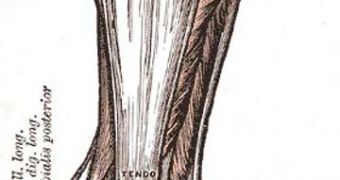For many years, scientists and athletics coaches have been trying to determine what foolproof combination of factors would yield the most positive results in a sprinter. The experts were looking for anthropological traits, as in generally valid features of the human bodies that made certain individuals more likely to be able to run faster than the average human. According to a recent set of studies, it may be that having long toes and short heels are the main traits one needs to have an advantage over other competitors, Wired reports.
“What we found is that sprinters actually had less mechanical advantage than the non-sprinter subjects that we tested. This was surprising to us because we expected that sprinters needed all the help they could get,” Penn State University biomechanics researcher Stephen Piazza says. He is the co-author of a new study detailing the finds, which was published in the Friday, October 30 issue of the respected Journal of Experimental Biology. The research seems to finally confirm what coaches have been saying for a long time, that a good sprinter is born, not made.
The shape of the legs and the size of the bones, which are both hereditary traits, indeed seem to be determining traits – this is the essential conclusion of the new paper. “If you think of your foot as being kind of like a wheelbarrow, when you grab the handles of the wheelbarrow and pull up, you’re doing what the Achilles tendon does. The longer those handles are, the easier it is going to be to lift up the load. If you had really short handles, you would have poor mechanical advantage,” Piazza adds.
At least in theory, having a shorter Achilles heel – the tendon that connects the lower part of the foot to the heel bone (calcaneus) – should make it more difficult for athletes to lift their feet off the ground. But researchers were surprised to find out that most performance athletes had short heel tendons. The trend was identified in other top athletes as well. On average, their Achilles heel was about 25 percent shorter than that of non-athletes, while their toes were also considerably longer.
“It turns out that there’s a trade-off that we think is going on. The larger the lever arm of the Achilles tendon, the more the tendon has to travel up when you point your toes. What that means is that the calf muscles have to shorten more rapidly, and muscle that is shortening more rapidly can’t generate much force,” Piazza adds.

 14 DAY TRIAL //
14 DAY TRIAL //